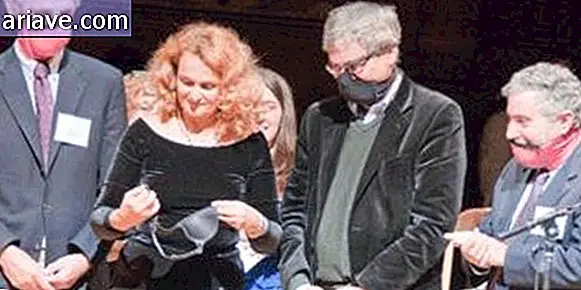Know the bizarre procedures performed before silicone prostheses
In the last century, medicine has evolved in many different aspects, and certainly one of the most striking is related to the techniques of plastic surgery. Concern for a “perfect” body has given rise to new surgical techniques, and today it is quite difficult to find anyone who has never undergone any type of cosmetic surgery or at least knows someone who has experienced it.
Among the most requested procedures is the implantation of silicone breast implants - it is estimated to be the second most performed type of surgery in the entire planet. It has not always been so, of course, and knowing the origins of this type of procedure, which is what you are going to do now, is interesting and a little scary too.
The first surgery

Vincenz Czerny was an acclaimed surgeon from the 1890s, recognized as one of the forerunners of plastic surgery techniques. In 1895, he performed a bizarre procedure on a 41-year-old singer who had a left breast tumor.
Concerned about the removal of the tumor and its fitness after the procedure, she asked the doctor to help her in some way. Czerny eventually found another apple-sized tumor in the patient's abdominal region and, to solve the problem, simply removed that tumor and transferred it to the patient's breast. Yes, that's exactly what he did, you didn't read it wrong.
As bizarre as the idea is, considering the time we are talking about and the techniques used by the doctor, it can be said that the reconstitution was "sophisticated." Czerny's technique was copied by doctors from various countries in the early decades of the 20th century, and it was common for women to undergo surgery that inserted materials such as paraffin, glass balls, sponges, bovine cartilage and wool into their breasts.

The consequences of this kind of procedure? Horrible, of course. As surgeries increased, cases of inflammation, necrosis, pulmonary embolism, liver problems, coma, and, of course, death increased.
In the 1940s and 1950s, ideas about a “perfect female body” were even more widespread, the pattern of which was simple but hardly found in its natural form: a slim waist, full breasts, and a large butt. Marilyn Monroe was the real muse of the moment, and her curvy body was the goal of women then. Interest in surgical procedures for breast augmentation only grew.
There was not yet a prosthesis considered ideal by all doctors, and some professionals implanted different types of sponges on their patients, but they rotted in a matter of weeks and caused severe inflammation and numerous other health problems.

The obsession with large breasts reached Japanese women during World War II. At the time, Orientals even injected industrial silicone into their breasts, always trying to adjust their bodies to US beauty standards. The result? Necrosis, infections, death.
The first silicone breast prosthesis was manufactured only in 1961, and the first to receive the implant was a dog called Esmeralda. After a few weeks, Esmeralda had the surgery stitches removed and was fine with no apparent problem.
The following year, Timmie Jean Lindsey became the first person to receive the same silicone implant. In an interview after the procedure, Lindsey said she had never considered breast enlargement and that when she sought medical help, she really wanted to remove a tattoo from her breast. It was then that the doctors asked if she would like to perform the surgical procedure.

If she agreed to go through the process, Lindsey would be "compensated" by the medical staff for another ear surgery - this surgery she really had an interest in. “When I came back from anesthesia, it was like an elephant sitting on my chest, but when they removed the bandages after 10 days, my breasts were beautiful. All the young doctors were standing around me to look at the masterpiece, ”Lindsey told the BBC.
In the late 1960s, in addition to silicone prostheses, women could also opt for saline implants, which were better developed over the years, to avoid ruptures and emptying.
Although prostheses were already being better studied and developed, it was not until 1976 that the requirement regarding the quality of surgical devices began to be taken into account. Still, many procedures were considered questionable, and in 1977, for the first time, a woman won a court case against a prosthesis manufacturer. Her implant eventually ruptured, and several health problems have come since.

At the time, she was compensated and received $ 170, 000, but the case was poorly reported. Still, the number of women claiming compensation for ruptures and other implant-related problems only increased, as did concern about this type of procedure.
Only in 1988 did silicone implants become part of a medical category that requires their safety to be proven before use. The years went by and in 1991 there was still not enough data to prove that this type of material was completely safe and did not harm the human body. In contrast, more and more women sued manufacturers over disruptions and health problems.
With the increase of lawsuits, the recommendation of silicone became only for cases of extreme need for breast reconstruction. More than a decade later, new prostheses and research have finally concluded that implants can indeed be safely made.
The procedure is increasingly seen as normal and harmless - just to give you an idea, in 2011 almost 150, 000 surgeries of this type were performed in Brazil alone. Remember that, in some cases, it is necessary to perform prosthesis replacement after a few years. All in the name of a large bust.
* Posted on 01/27/2016











